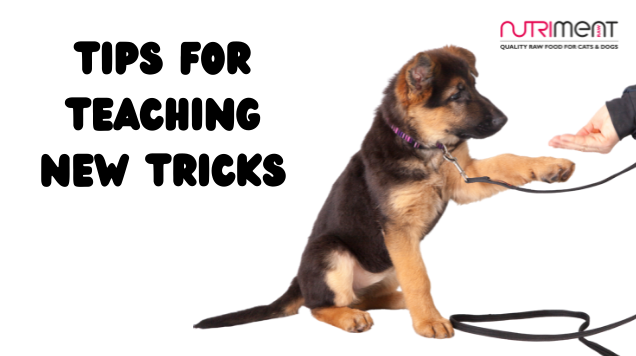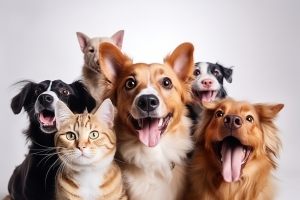You CAN teach old dogs new tricks with this handy guide!

They say you can’t teach old dogs new tricks, but here at Nutriment we know that is definitely not true! Dogs are loyal, intelligent and loving animals who strive to please no matter what age they are. Training and teaching tricks are both highly effective ways of mentally stimulating your dogs, boosting their happiness, and reinforcing the bond between you and your dog. It is also great fun for everyone involved.
There are a few things to consider when embarking on a training journey, so we’ve compiled some ‘dos’ and ‘don’ts’ to help you and your dog along the way. Follow our advice and they’ll be rolling over, shaking hands and bowing on command in no time!
DO
The magic words: Positive Reinforcement
All qualified and experienced dog trainers will tell you that positive reinforcement is the only way to train your dog. Dogs respond fantastically to treats, rewards, positive words and general feelings of positivity. This will encourage desired good behaviour and keep your dog interested in further learning and training.
Timing is everything
Just like humans, dogs can get bored when activities go on for an extended period. Keeping training limited to 10-20 minutes per session, and never longer than 30 minutes, will keep your dog interested and not overworked. Rest is also an important part of training.
Consistency is key
Dogs respond well to routines. Using the same place for training, the same words and hand signals for commands, the same person for commands, and the same treats for rewards will help establish a familiar training routine for your dog, which will encourage effective learning and results.
Enjoy yourselves!
Training and teaching tricks are supposed to be fun for both you and your dog. If you are impatient or become stressed, your dog will sense this and react accordingly. Take your time, enjoy the process and you’ll both reap the rewards in the long term.
DON’T
Scalding or shouting is not ok
Outdated training methods may encourage dog owners to harshly discipline dogs when they don’t behave as we want. This may include shouting, intimidating, restricting rewards or even ‘tapping’ them on the nose. We do not agree with or recommend this approach at all and plenty of modern research shows that this is a hugely ineffective way of training dogs. If your dog doesn’t respond in the way you had hoped, take a break, encourage your dog with positive words and behaviour, and resume when you’re both feeling up to it.
Distractions are never good
Household children, noises and other pets can all create distractions which can steal your dog’s attention during training. It’s important to create a calm and quiet space to train in so that you have your dog’s undivided attention (and they have yours) in order to effectively teach and reward.
Don’t expect too much, too soon
Taking baby steps and being patient is essential. Don’t expect a pup who has never learnt a trick to be rolling over after just one 20-minute training session. Small, achievable steps and goals will prevent any disappointment and will encourage both you and your dog to continue with training.
For serious behavioural concerns, we always recommend chatting to your vet to rule out any injury or illness, and consulting a qualified behaviourist for professional advice.
Our Leo & Wolf treats are the perfect training rewards. Explore the range here and stock up ready for your first training session!





